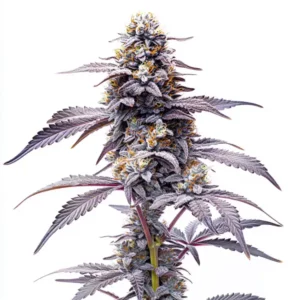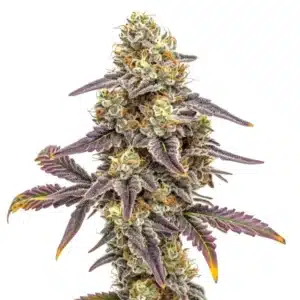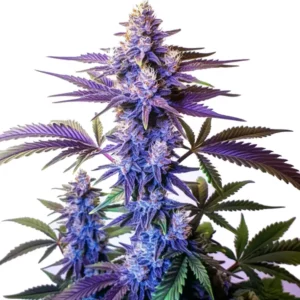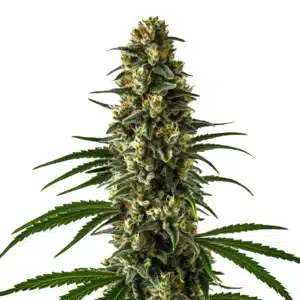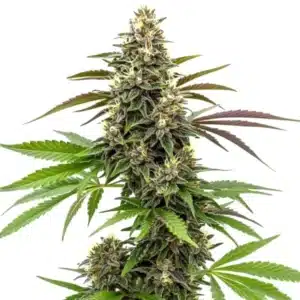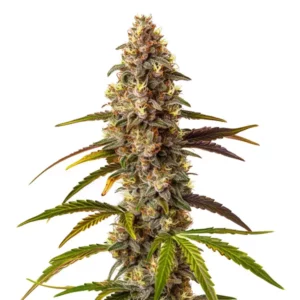
Phytohormones in Cannabis Plants
Phytohormones in cannabis plants are chemical messengers that play a crucial role in plant growth and development. These natural compounds regulate various functions, ensuring your cannabis plants thrive. Knowing the effects of phytohormones on cannabis growth helps growers maximize their yield and quality.
Auxins, gibberellins, cytokinins, and ethylene are key phytohormones in cannabis plants. Each has distinct functions, from root development to flowering. By manipulating these hormones, growers can enhance plant health, improve bud quality, and increase yields.
Recommended Strains
Animal Mints
|
|
THC | 22% - 24% (Medium) |
|
|
Type | Feminized |
|
|
Yield | Low |
|
|
Phenotype | 60% Indica / 40% Sativa |
Alien Technology x Do-Si-Dos
|
|
THC | 20% - 25% (Medium) |
|
|
Type | Feminized |
|
|
Yield | Medium |
|
|
Phenotype | 80% Indica / 20% Sativa |
For instance, choosing the right cannabis strain is vital. Strains like Gorilla G4, Bruce Banner 3, and Girl Scout Cookies from Blimburn Seeds are known for their responsiveness to phytohormones. These strains can benefit from tailored hormone treatments to boost performance.
Auxins and Their Role in Cannabis Cultivation
Auxins are vital for the growth and development of cannabis plants. They promote root growth and are essential during the early stages of plant life. Auxins help cells elongate, which is crucial for stem growth and overall plant size.
When using auxins in cannabis cultivation, it’s important to apply them judiciously. Overuse can lead to elongated stems and weakened plants. A balanced approach ensures robust root systems and sturdy plants. Strains like Bruce Banner can greatly benefit from precise auxin management, leading to healthier growth.
The function of auxins in cannabis cultivation extends beyond root development. These phytohormones in cannabis plants also facilitate phototropism, allowing plants to direct growth towards light sources. This adaptability is crucial in maximizing light absorption and ensuring optimal photosynthesis, particularly in controlled environments.
Additionally, auxins interact with other hormones to regulate apical dominance, which determines the growth pattern of the cannabis plant. By knowing the function of auxins in cannabis cultivation, growers can manipulate growth patterns to encourage bushier plants, thereby increasing the number of bud sites and potential yield.
Practical Applications of Auxins
Applying auxins during cloning improves root formation. This is particularly useful for growers looking to propagate strains like Gorilla G4. By dipping cuttings in an auxin-rich solution, you increase the chances of successful rooting.
Auxins also help manage plant height. In indoor grows, controlling height is crucial to utilize space effectively. By knowing the function of auxins in cannabis cultivation, you can tailor your growing techniques to achieve desired plant sizes.
In addition to aiding in cloning, the practical applications of auxins include their use in tissue culture techniques. Auxins can stimulate callus formation, an essential step in micropropagation, offering a method to rapidly multiply cannabis plants while maintaining genetic consistency.
Through careful application, auxins can be used to initiate lateral root development, allowing plants to absorb nutrients more efficiently. This aspect of the function of auxins in cannabis cultivation underscores the importance of nutrient uptake for achieving vibrant, healthy plants.
Promos & Deals
Gibberellins Impact on Cannabis Yield
Gibberellins are another group of phytohormones in cannabis plants that influence growth. They play a significant role in promoting cell division and elongation, which can affect plant height and leaf expansion.
These hormones are crucial during the flowering phase. Gibberellins impact on cannabis yield is evident as they promote bud development and increase the number of flower sites. Strains like Girl Scout Cookies respond well to gibberellin treatments, resulting in denser and more abundant buds.
Beyond their impact on flowering, gibberellins are vital in breaking seed dormancy, ensuring that cannabis seeds germinate effectively. This is particularly important for growers seeking consistent germination rates and strong seedling establishment, which are foundational for successful crops.
Gibberellins also influence the overall vigor of cannabis plants by enhancing their ability to withstand stress conditions such as drought. This resilience can be attributed to the gibberellins impact on cannabis yield, enabling plants to maintain growth even under less-than-ideal conditions.
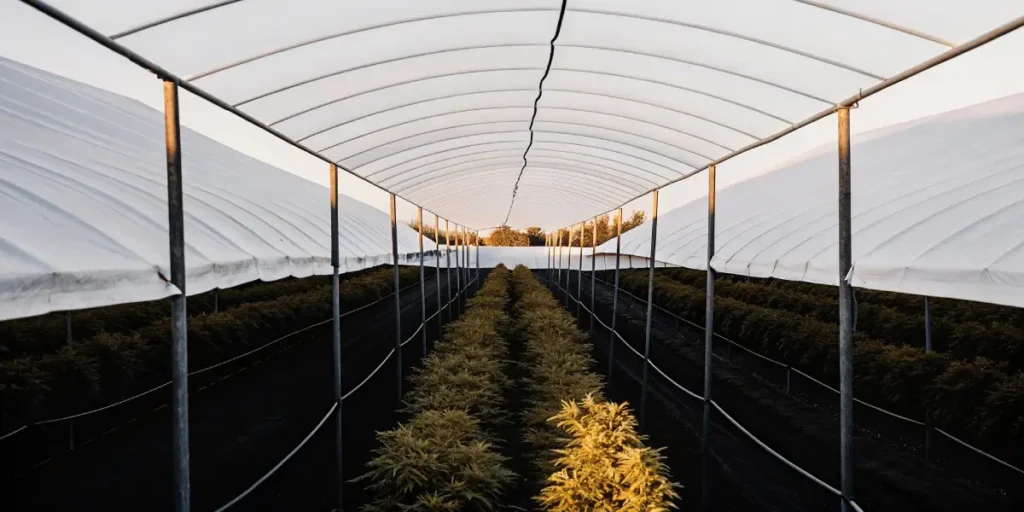
Managing Gibberellins for Optimal Growth
Using gibberellins requires careful attention. Over-application can cause plants to become too tall and spindly. However, when used correctly, they can enhance the size and quality of the harvest.
For indoor setups, controlling gibberellin levels ensures plants don’t outgrow their space. This is particularly important for high-yield strains like Bruce Banner, where maximizing bud sites translates to more significant yields.
In managing gibberellins for optimal growth, timing is crucial. Applying them during the vegetative stage can accelerate growth, allowing plants to reach their optimal size before transitioning to flowering. This strategic use of gibberellins can lead to increased biomass and subsequent yield.
Moreover, knowing the gibberellins impact on cannabis yield involves fine-tuning their levels to complement other phytohormones in cannabis plants. This hormonal balance ensures harmonious growth, preventing issues such as lodging, where plants fall over due to excessive height.
Cytokinins and Cannabis Plant Development
Cytokinins are instrumental in cell division and differentiation in cannabis plants. They work in tandem with auxins to balance root and shoot growth. These hormones are crucial for overall plant structure and health.
In cannabis cultivation, cytokinins encourage lateral growth, resulting in bushier plants. This is beneficial for strains like Gorilla G4, where maximizing canopy coverage can lead to higher yields. Cytokinins and cannabis plant development are intertwined, with the right balance promoting optimal growth.
Cytokinins also play a role in nutrient mobilization, enhancing the plant’s ability to transport vital nutrients to growing tissues. This action supports robust vegetative growth and contributes to the overall vitality of the cannabis plant, which is essential for a successful harvest.
The influence of cytokinins on shoot proliferation makes them indispensable in tissue culture applications. By promoting the development of multiple shoots from a single explant, cytokinins facilitate the rapid production of cannabis clones, ensuring a uniform and high-quality crop.
Enhancing Growth with Cytokinins
Applying cytokinins during the vegetative stage encourages robust branching. This helps create a fuller plant with more bud sites, crucial for maximizing yield. Using phytohormones in cannabis plants strategically can enhance overall plant architecture.
Cytokinins also delay leaf aging, ensuring a longer vegetative period. This allows plants to develop more fully before transitioning to flowering. For growers of strains like Girl Scout Cookies, this results in heavier and more uniform buds.
Enhancing growth with cytokinins involves precise application to avoid excessive shoot growth, which can lead to overcrowding and reduced light penetration. Balanced cytokinin levels promote a well-structured canopy, optimizing light exposure for each leaf and bud site.
Incorporating cytokinins into a holistic growth strategy requires knowing their interaction with auxins and other phytohormones in cannabis plants. This integrated approach allows growers to fine-tune plant development, achieving the ideal balance between vegetative growth and flowering potential.
Ethylene Influence on Cannabis Flowering
Ethylene is a phytohormone that regulates flowering, fruiting, and senescence in cannabis plants. It plays a critical role in the transition from vegetative growth to flowering. Managing ethylene levels can impact the timing and quality of blooms.
For strains like Bruce Banner 3, ethylene influence on cannabis flowering can be harnessed to control flowering onset. This is particularly useful for synchronizing harvests and ensuring uniform bud development across a crop.
Beyond flowering, ethylene influences the process of abscission, the shedding of leaves and flowers. This natural process can be managed to reduce waste and improve the efficiency of nutrient allocation within the plant, leading to healthier and more productive crops.
Ethylene’s role in stress responses is another critical aspect of its influence on cannabis plants. When subjected to environmental stressors, the modulation of ethylene production can help plants cope with adverse conditions, maintaining growth and ensuring yield stability.
Optimizing Ethylene for Better Buds
Ethylene can be used to trigger flowering in photoperiod strains. By manipulating light exposure and ethylene levels, growers can induce flowering at will. This technique is valuable for indoor growers looking to control harvest cycles.
Managing ethylene is also crucial in ripening. It speeds up the maturation of buds, which can be advantageous when aiming for specific harvest windows. For strains like Gorilla G4, careful ethylene management ensures peak potency at harvest.
Optimizing ethylene for better buds requires a delicate balance, as excessive ethylene can lead to premature senescence and reduced bud quality. By monitoring ethylene levels, growers can ensure that flowering occurs at the optimal time for maximum potency and flavor.
Knowing the ethylene influence on cannabis flowering involves integrating it with other hormone management strategies. This comprehensive approach enables growers to produce uniform, high-quality buds that meet market demands while maintaining plant health and longevity.
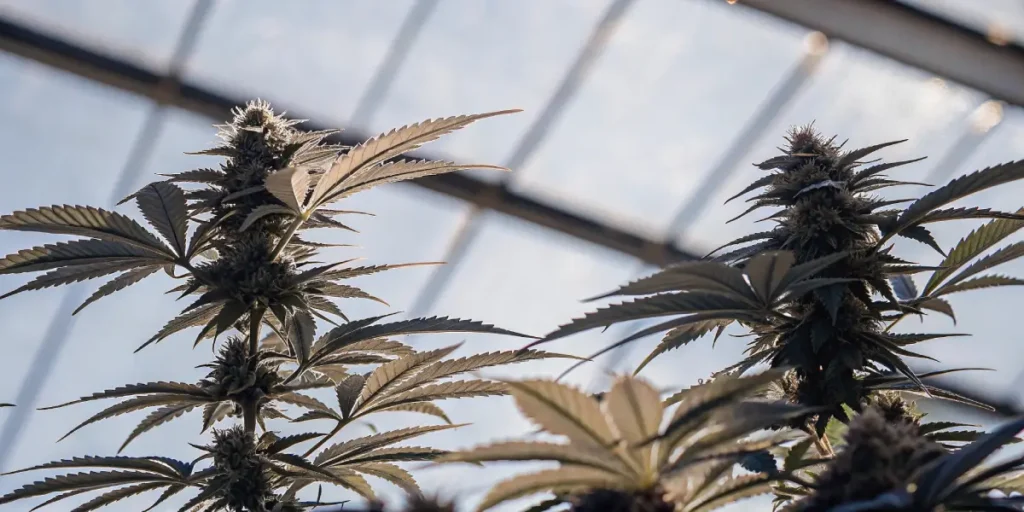
FAQs about phytohormones in cannabis plants
What are phytohormones in cannabis plants?
Phytohormones in cannabis plants are natural compounds that regulate growth and development. These include auxins, gibberellins, cytokinins, and ethylene, each playing distinct roles in plant processes. By managing these hormones, growers can influence plant health, yield, and quality.
Auxins promote root development, gibberellins affect height and flowering, cytokinins encourage branching, and ethylene regulates flowering and ripening. Knowing these hormones’ effects allows cultivators to optimize their growing techniques for better results.
These phytohormones in cannabis plants are integral to achieving balance within the plant’s internal systems, allowing for synergy between various growth stages. This coordination is crucial for producing a high-quality crop that meets both aesthetic and potency standards.
Comprehending the effects of phytohormones on cannabis growth provides growers with the knowledge to adapt their cultivation practices. This adaptability is key to navigating challenges such as climate variability and pest pressures, ensuring consistent and successful harvests.
How do auxins affect cannabis growth?
Auxins are crucial for root formation and stem elongation in cannabis plants. They help establish strong root systems, which are vital for nutrient uptake and plant stability. By managing auxin levels, growers can ensure healthy plant development.
In cloning, auxins enhance root growth from cuttings, increasing propagation success rates. They also help control plant height, which is essential in indoor growing environments where space is limited. Proper auxin management leads to more vigorous and productive plants.
The function of auxins in cannabis cultivation extends to influencing the plant’s response to environmental stimuli. By modulating growth patterns, auxins enable plants to adapt to varying light conditions, enhancing their overall resilience and productivity.
Auxins also play a pivotal role in vascular tissue development, facilitating the transport of water and nutrients throughout the plant. This internal distribution system is crucial for sustaining growth and supporting the plant’s metabolic needs.
How do gibberellins impact cannabis yield?
Gibberellins influence cell division and elongation, affecting plant size and structure. During the flowering stage, they promote bud development and can increase the number of flower sites. This results in higher yields when managed correctly.
Strains like Bruce Banner 3 and Girl Scout Cookies benefit from gibberellin management. By optimizing their levels, growers can enhance bud density and size, leading to more substantial harvests. Knowing gibberellins’ impact allows for precise control over plant growth.
Gibberellins impact on cannabis yield is further seen in their ability to enhance photosynthetic efficiency. By promoting leaf expansion, gibberellins increase the plant’s capacity to capture light energy, directly influencing growth rates and biomass production.
These phytohormones in cannabis plants also contribute to internode elongation, creating space for bud development and improving air circulation within the canopy. This physiological change is critical for preventing mold and maximizing flower quality.
What is the function of cytokinins in cannabis plant development?
Cytokinins are key to cell division and shoot growth in cannabis plants. They work with auxins to balance root and shoot development, promoting bushier growth. This is advantageous for maximizing light exposure and increasing potential yields.
These hormones also delay leaf senescence, extending the vegetative period and allowing for more robust plant growth. Managing cytokinins effectively leads to healthier plants with more bud sites, essential for high-yielding crops like Gorilla G4.
Cytokinins and cannabis plant development are closely linked, as they regulate nutrient allocation, ensuring that growing tissues receive the necessary resources. This regulation supports vigorous growth and enhances the plant’s ability to recover from stress.
Furthermore, cytokinins influence the distribution of carbohydrates within the plant, promoting energy storage in essential organs. This strategic energy management is vital for sustaining growth during the demanding flowering phase.
How does ethylene influence cannabis flowering?
Ethylene regulates flowering and ripening in cannabis plants. It can be manipulated to control the onset of flowering, which is crucial for timing harvests and achieving uniform bud development. This is particularly useful for indoor growers managing light cycles.
Besides to triggering flowering, ethylene affects bud maturation. By controlling its levels, growers can optimize the ripening process, ensuring buds reach peak potency at harvest. Proper ethylene management is key to producing high-quality cannabis.
The ethylene influence on cannabis flowering also extends to its role in stress response. By modulating ethylene production, growers can help plants endure environmental stresses such as temperature fluctuations, ensuring consistent growth and development.
Adjusting ethylene levels in conjunction with other phytohormones in cannabis plants allows for precise control over flowering dynamics. This balance is essential for achieving desired harvest outcomes and maintaining plant health throughout the growth cycle.


